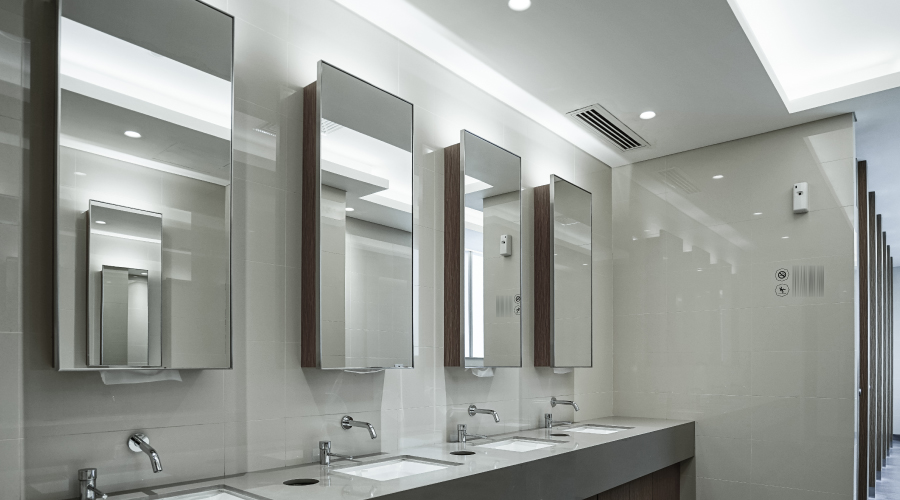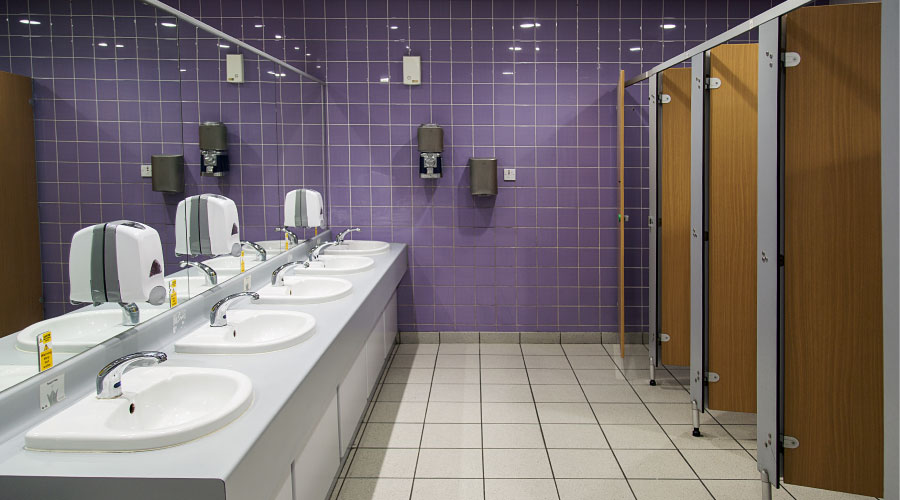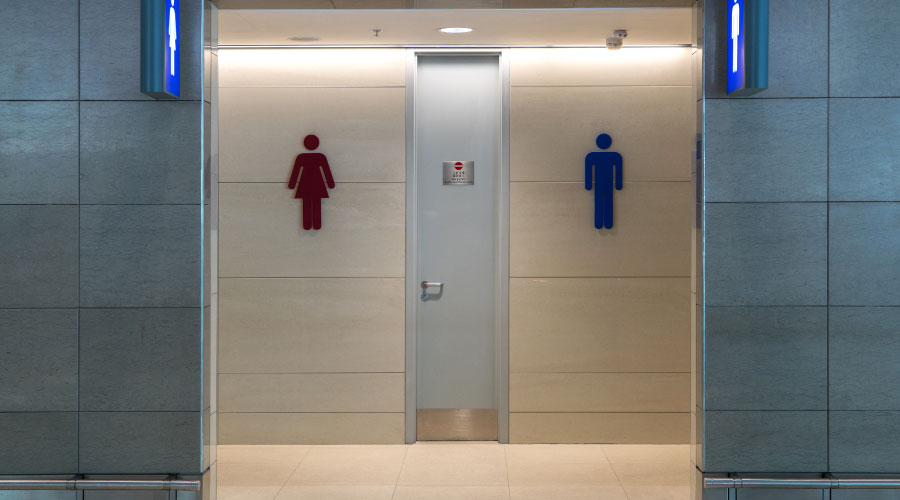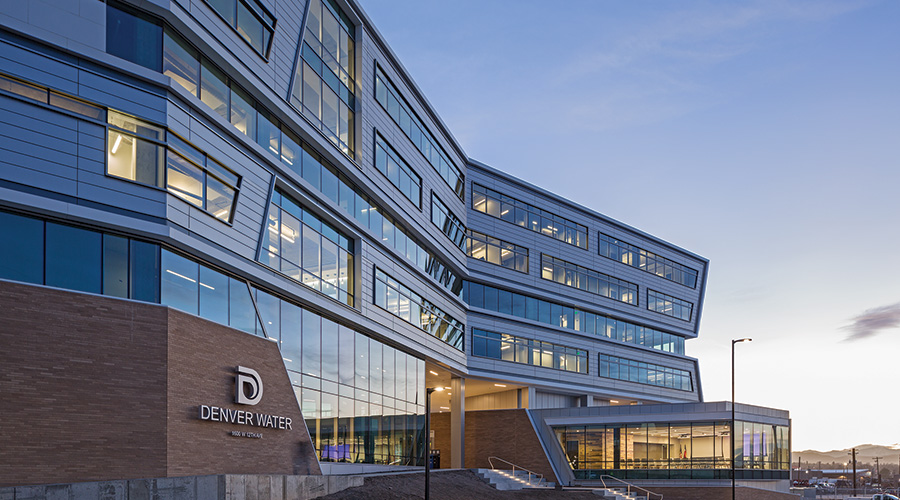Smart Bathrooms Gain Traction Post-COVID
Evolving technology, combined with pandemic health and experience expectations, are pushing restrooms to catch up to intelligent building expectations.
The post-COVID-19 pandemic new normal, which is yet to be fully realized, will undoubtedly include the rapid growth of smart restrooms in institutional and commercial facilities. The evolution of the Internet of Things (IoT) and artificial intelligence (AI) working together will help us make better decisions and proactively respond to our occupants’ needs in these spaces.
What makes something “smart?” For buildings, it means technology applications that can tell you when there is, or when there is likely going to be an issue, so that it can be resolved before it becomes a problem or complaint. The benefit of “smart” goes up exponentially if the application prioritizes the problem and suggests how to improve your customer’s experience, rather than add a new task to a facility manager’s ever-growing to do list. And lastly, like everything else in the evolving smart buildings world, the information related to building management activities should be readily aggregated to help you understand the holistic picture of building operations’ impacts, including environmental, social, and governance impacts.
Safe, positive experiences
How can you leverage technological innovations to bring your restroom in line with the experience in the rest of the building? Restrooms receive some of the highest traffic of any space in the building. Every time someone enters a restroom it is an opportunity to delight or disappoint.
During the COVID-19 response, hand sanitizer stations and automatic door openers proliferated. The message was “Don’t touch things that you don’t have to touch.” Post-pandemic, all of that traffic and the use of common receptacles can make even the most relaxed person feel a little squirmy about entering shared restrooms. Perceived or real, the fear of touching and therefore transmitting disease has become extremely engrained in the minds of society through messaging across the last two-plus years.
Monitoring traffic patterns and occupant sentiment in restrooms through the application of IoT sensors are two effective ways to stay on top of restroom service and ensure a positive experience during fluctuating occupancy. Sensors can be placed at a door threshold to help count how often and for how long doors are opened during the day. Gauging and monitoring customer sentiment through feedback signs or scannable codes can be added to the mix. Insights from door swings at peak times, overlaid with tracking customer sentiment, can guide changes in janitorial scheduling.
Leak detection is also beginning to deploy in restrooms. Tiny, easy-to-install IoT sensors are readily available now. If facility managers have an older building with unpredictable leaky pipes, popping a flat, half-inch square sensor in leak-prone locations can cost as little as 10 cents a day to monitor and alert of moisture before it becomes a costly problem.
Sensing and monitoring the restroom environment goes beyond answering the need for bathrooms fully stocked with consumables – IoT also has a place to deliver value in Class A, high-touch restrooms by being able to provide visitors with a first visitor of the day feeling. IoT can help assure that, in addition to stocked consumables, there are no traces of water on counters or on the floor, air quality is good and nothing is left in the environment to remind patrons that a few people have already visited and used the place before them.
Addressing fears of how to safely return to the office, post-pandemic is extremely important in restrooms. A great restroom experience will communicate that employers care about their employees — not just via a sparkling lobby or well-stocked canteen, but right down to the restrooms. The future of creating an experience for your workforce is now, and smart restrooms are an important component of that experience.
The ESG angle
Environmental, social and governance (ESG) goals are being quantified at every level of building management, restrooms included.
When a cleaning regime is frequency based, janitors will replace paper towel rolls before they are fully utilized, creating an unnecessary waste of paper and money. Further, paper towels are made from a renewable resource but they create a very potent greenhouse gas, methane, when they are sent to the landfill and degrade in an anaerobic environment. Newly established regional composting facilities are scrambling to gather this fairly pure stream of wet paper towels as a vital component of making healthy compost.
Knowing how full sink-side waste bins are and proactively tidying them up supports a fresh presentation. Measuring the weight of the waste as it’s leaving the facility can help quantify, and if composted, improve waste diversion goals for building owners.
Providing women’s menstrual supplies to all (gender equality) and assuring the disposal process has a low impact to the planet (product circularity) are implicitly called out in two U.N. Sustainable Development goals. Lowering the use of chemicals by cleaning in a more targeted manner also has broad human and environmental benefits.
How can restrooms be “smart” in supporting all of these ESG goals? Measuring and monitoring these consumables via IoT sensors has applications at multiple stages of building operations. Flexible, durable sensors and connected information streams will help quantify use and alert to needs. Combining all of this big data via the rapidly evolving world of IoT and AI is the next frontier.
Companies are investing in easy-to-use, scalable IoT solutions that provide a highly efficient, safer, and healthier experience to building occupants.
Time for smart restrooms
Many of the desirable attributes of “smart buildings” are already being realized in engineering and general building maintenance. Energy meters, variable drives and vibration sensors, combined with an industry dependent on preventive maintenance record keeping, all support the evolution to automated data trending, informing predictive maintenance.
The same level of insights has not yet manifested in the application of soft services. While receptable sensors and automatic flushing have been around for several years, the innovation has mostly stopped. Challenges with integrated workplace management systems integration and a market that expects consumable dispensers for free have limited the adoption of smart sensors across all space types. The most modern IoT sensors have shrunk in size and cost and uncoupled the requirement to use only specific manufacturers.
The continuous challenge with even these cheaper, easier-to-deploy solutions, is hardware and software integration across device types and platforms. Integration is getting easier, but usually still requires a lift from software developers to leverage an application programming interface and custom algorithmic programming to enable useful insights from the loads of data. However, the tech and IoT industries are changing rapidly and working together to solve the problem.
The future
This magical combination of AI and IoT is being referred to as AIoT, which combines artificial intelligence and the Internet of Things with an aim to proactively manage the operations and efficiency of smart devices. The transformation of big data into predictive insights is at an exciting precipice. The number of machine-to-machine connected devices in 2018 was estimated at 6 billion in 2018 and is estimated to be at 15 billion by next year, according to the Cisco Annual Internet Report dated March 9, 2020.
The industry is very close to a point when IoT data will be analyzed by artificial intelligence and transform the way operational (including cleaning) teams work. The insights will track consumable use, convert that use to measurable impact and inform scheduling. Tracking consumables and pop-up problems such as leaks will then turn most reactive work into proactive work that can be performed during occupancy downtimes.
As AI and IoT continue to converge, smart buildings will be able to learn occupant patterns and develop automated work orders to proactively meet needs. Today, some organizations provide services that include data-informed cleaning regiments – cleaning based on use rather than standard schedules. Tomorrow those cleaning regiments will be predicted with artificial intelligence and scheduled out weeks or even months in advance.
Assuring building IoT technology is seamless and data can align on the back-end has been the biggest challenge of making intelligent buildings truly beneficial to owners and operators. The challenge has been even greater for soft services, where workers are expected to update routines and tasks based on ever-changing insights. Recent innovations in big data management, sensor evolution and artificial intelligence are finally converging to operationalize the data.
The future of IoT to enable smarter, more predictive analytics is limited only by our imagination and our ability to empower our workforce in an organized and user-friendly way.
Jessica Rose is the global product lead for JLL.
Related Topics:












